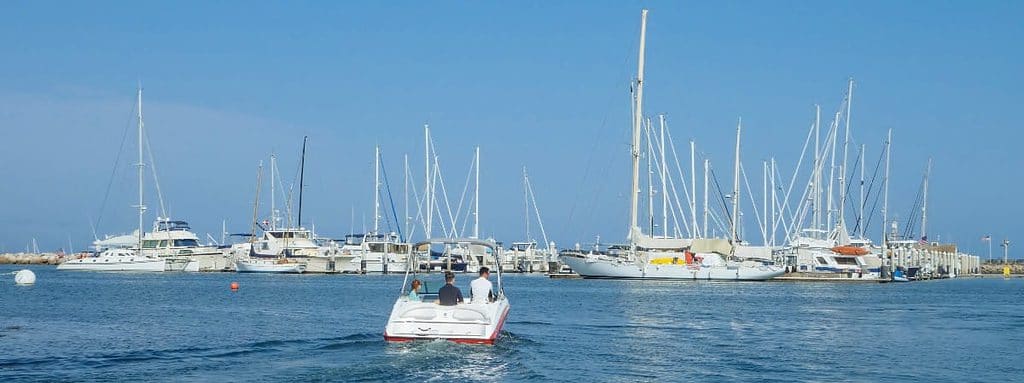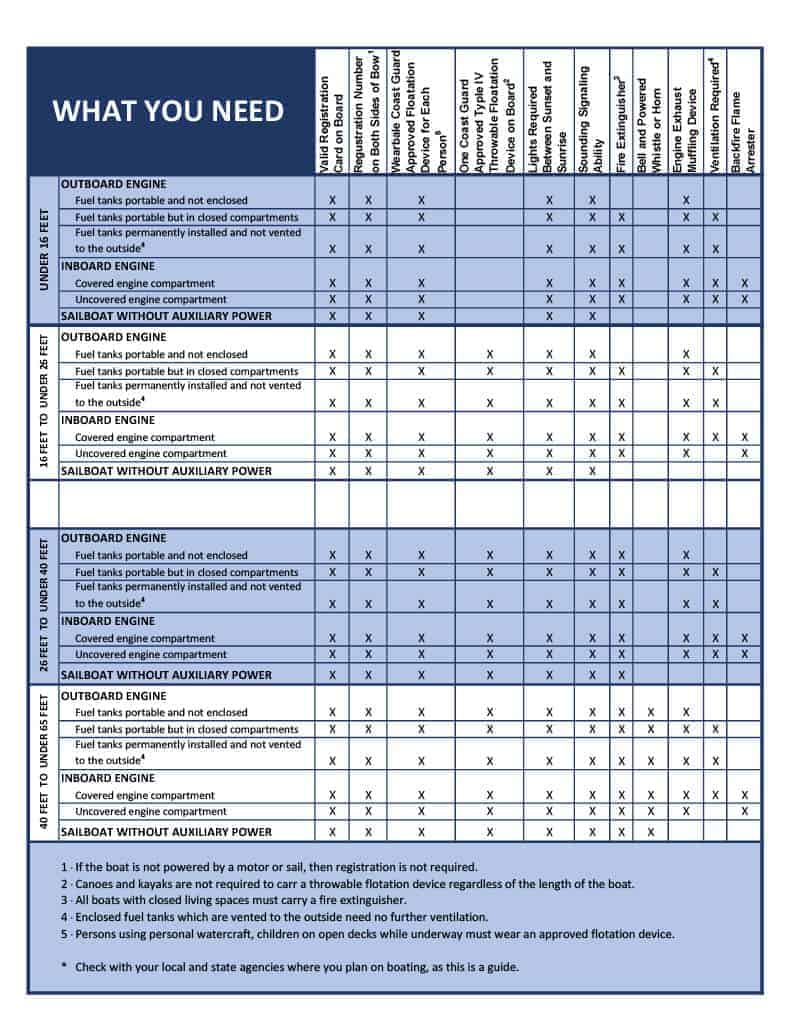
Whether you you are planning a trip to use your boat for fishing, wakesurfing, skiing, diving, day cruising or overnighting, remember to pack essential safety gear. If you keep it onboard, inspect it periodically and keep it in good working order. The U.S. Coast Guard requires different items for different kinds and sizes of vessels, and we have compiled a Summary Reference guide, in a chart format that will allow you to reference “What You Need” in regards to safety features on your vessel for boats under 16 feet all the way up to 65 feet. Feel free to print the PDF file below and keep on board your vessel.

Vessel Safety Checks
The Vessel Safety Check is a complimentary check of your boat conducted by members of the Auxiliary, confirming that it meets both federal and state requirements for safety.
No citations are issued and the results of the safety check are not reported to any enforcement agency, but a decal is awarded to display if the vessel has passed the examination.
The Vessel Safety Check gives you a risk-free way to check that you meet the legal minimums and to potentially avoid a citation later.
Benefits of a USCG Vessel Safety Check:
- Vessel Safety Checks can reduce the length of time the Coast Guard spends on your vessel, if you are boarded.
- Vessel Safety Checks can reduce the chances of your voyage being terminated for safety violations.
- Vessel Safety Checks can increase the chances of your safe return.
- Vessel Safety Checks can reduce the chances of problems being found, if your vessel is boarded by the Coast Guard.
- Vessel Safety Checks are done at your convenience.
- Vessel Safety Checks are voluntary, and you cannot receive a civil penalty.
- Vessel Safety Checks are FREE.
13 Should-Have Safety Equipment for Your Boat
Depending on the type of boating you do and where you plan on boating, some of these additional items may be required or may only recommended items. Either way, you can pack most of these aboard even the smallest of boats.
- Sunscreen
- Medical kit for cuts, scrapes, seasickness or small emergencies
- Anchor with line to hold your boat in place
- Bailing device or bucket to dewater and stay afloat
- Oars or paddles
- Cellphone
- VHF radio to call for help
- Knife to cut a line around a fouled propeller
- Snorkel mask
- Heavy duty flashlight
- Skier or diver down flag
- Working running lights
- A way to get weather updates because things can change quickly even on a lake
1. Life jackets and wearable personal flotation devices (PFDs)
An accessible, wearable PFD (Type I, II, or III) is a life jacket that must be available for each person on board. If you’re towing a skier or have a wake surfer behind the boat, he or she will need to be wearing a PFD. Kids 12 and under must always wear their PFD on a moving vessel. Anyone riding a personal watercraft (PWC) must also wear a PFD at all times.
2. Throwable flotation devices
In addition to the life jackets you wear, you’ll need at least one floating device (Type IV) that you can throw to an individual in the water in case of trouble. This can be a cushion, a ring buoy or other device and although only one is required. Some floating devices (Type IV) come with a line attached so you can pull the person in the water closer to the boat and then get them out of the water.
3. Fire extinguishers
There are many different kinds and ratings for extinguishers, boats under 26 feet (including PWCs) need at least one B-1 type extinguisher and boats 26 feet to 40 feet need two B-1 types or one B-2 type.
4. Visual signaling devices
Visual distress signals can come in a variety forms and have different requirements by size of the boat and even by the state where you one goes boating. Boats under 16 feet must have flares or nighttime signals. Boats over 16 feet must carry visual signals for both day and night use. Some flares are self-launching while others utilize a flare gun. Other possible nighttime devices include a strobe light, while flags may be used during the day.
5. Sound signaling devices
Portable or fixed horns and whistles count as sound-generating devices for all boats. Larger vessels (over 39 feet) should also carry a bell to be sounded at regular intervals in times of limited visibility like fog.

